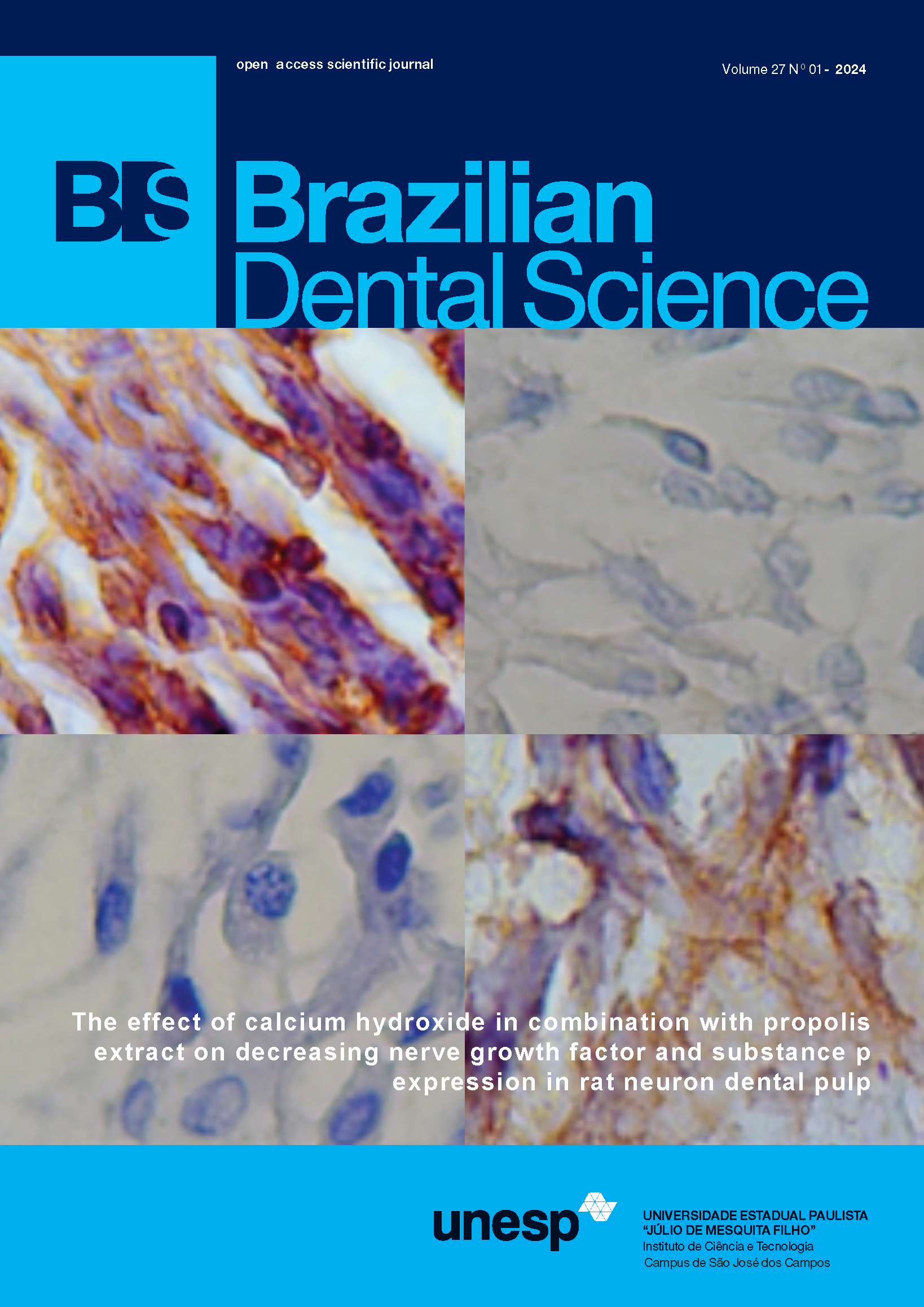Maxillary osteomyelitis associated with COVID-19: mucormycosis or not? A series of cases
DOI:
https://doi.org/10.4322/bds.2024.e3811Abstract
Aim: A series of cases have been presented involving the oral cavity focusing on the presentation, diagnosis and treatment of mucormycosis that can form a basis for successful therapy. Background: The management of severe coronavirus disease (COVID-19) in conjunction with comorbidities such as diabetes mellitus, hematological malignancies, organ transplants, and immunosuppression have led to a rise of mucormycosis which is an opportunistic infection. Cases Description: The various forms that have been enlisted till date are rhinocerebral, rhino-orbital, gastrointestinal, cutaneous, and disseminated mucormycosis. From the dentistry and maxillofacial surgery perspective, the cases depicting extension of mucormycosis into the oral cavity have been less frequently recorded and thus, require a detailed study. The patients that reported to our private practice had non-tender swelling, draining sinuses and mobility of teeth. A similarity was observed in the clinical signs both in osteomyelitis and mucormycosis. Thus, a histopathological examination was used to establish the definitive diagnosis. Conclusion: Mucormycosis is a life threatening pathology that requires intervention by other branches to make an early diagnosis and commence the treatment. The characteristic ulceration or necrosis is often absent in the initial stage and thus, histopathological examination and radiographic assessment are required to formulate a definitive diagnosis. Early intervention is a necessity to avoid morbidity. The treatment involves surgical debridement of the necrotic infected tissue followed by systemic antifungal therapy. Mucormycosis has recently seen a spike in its prevalence, post the second-wave of coronavirus pandemic in India. It was seen commonly in patients with compromised immunity, diabetes mellitus, hematological malignancies, or on corticosteroid therapy. Mucormycosis invading the palate mostly via maxillary sinus has been less frequently described. In the post-COVID era the features associated with mucormycosis involving oral cavity, should warrant a possible differential diagnosis and managed appropriately.
KEYWORDS
Eschar; Immunomodulation; Mucormycosis; Palatal ulceration; Rhino-Cerebral.
Downloads
Published
How to Cite
Issue
Section
License
Brazilian Dental Science uses the Creative Commons (CC-BY 4.0) license, thus preserving the integrity of articles in an open access environment. The journal allows the author to retain publishing rights without restrictions.
=================




























